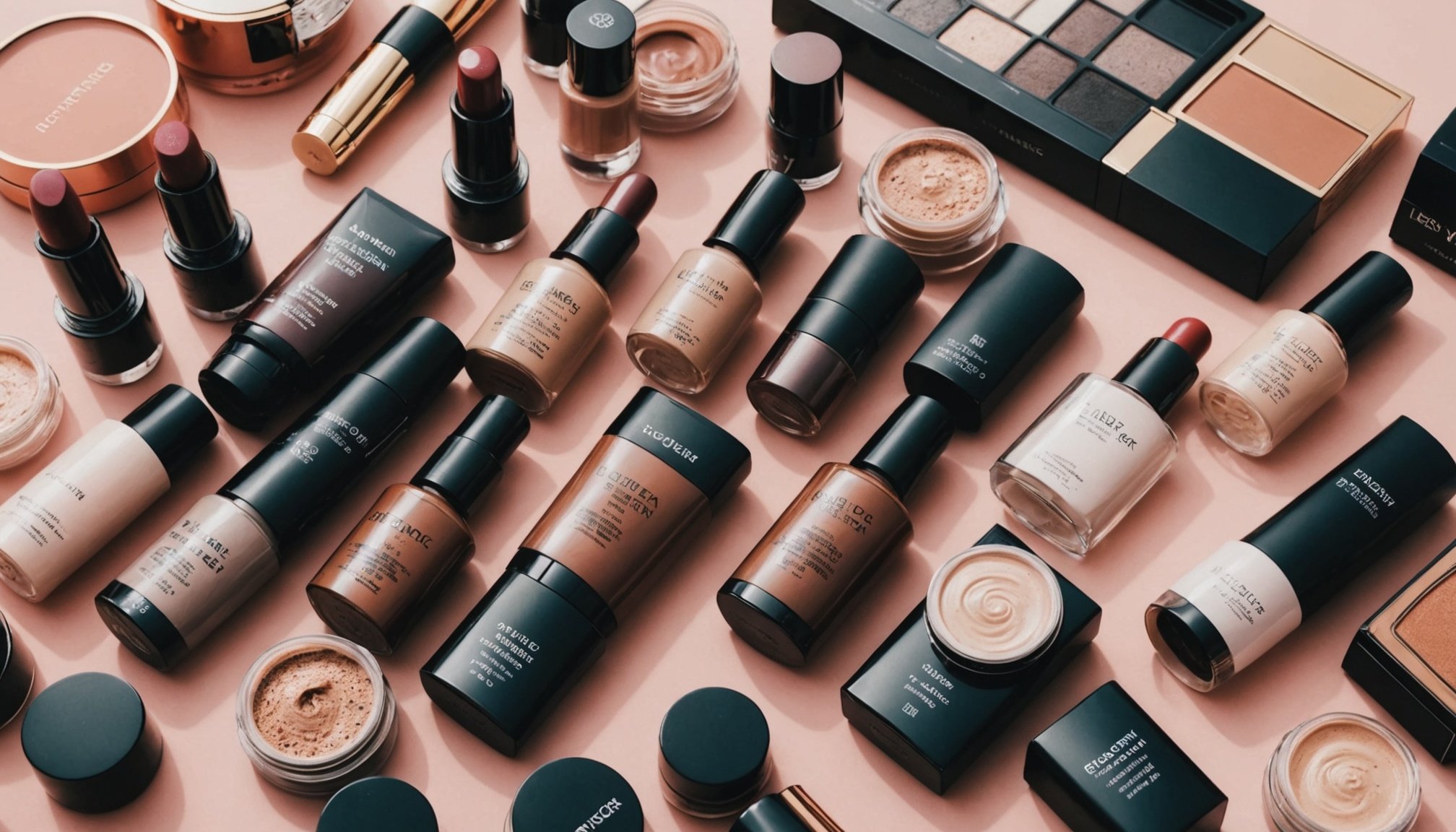Understanding Influencer Marketing in the Beauty Industry
The beauty industry has harnessed the power of influencer marketing to connect with audiences effectively. In the UK market, beauty brands leverage social media personalities to endorse products, amplifying their reach and credibility. This symbiotic relationship allows influencers to maintain authenticity while enabling brands to tap into niche markets.
The Growth of Influencer Partnerships
In recent years, the UK market has witnessed a substantial rise in influencer partnerships. This is primarily because influencers wield significant power over consumer decisions. By collaborating with influencers who have established trust with their followers, beauty brands can create authentic and dedicated campaigns. Influencers not only promote products but also craft personalised narratives, which resonate more profoundly with audiences.
Also read : Unlocking energy potential with vallourec smart tubular solutions
Consumer Trust and Purchasing Decisions
Consumer trust is pivotal in the effectiveness of influencer marketing. Followers often view influencers as relatable figures rather than traditional celebrities, creating a sense of intimacy and reliability. When influencers recommend beauty brands, their endorsements often carry more weight than conventional advertisements. This trust directly affects purchasing decisions, as consumers are more inclined to try products endorsed by personalities they admire and trust.
By understanding these dynamics, beauty brands in the UK can effectively harness influencer marketing to foster growth and build lasting consumer relationships.
Also read : Maximizing Profits: Top Subscription Model Tactics for UK Fitness Brands
Current Trends in Influencer Marketing
Influencer marketing is evolving rapidly, emphasising authenticity and strategic engagement with audiences. In the realm of beauty marketing strategies, there is a palpable shift towards leveraging micro and nano influencers. These influencers, though possessing smaller follower counts, exert a profound and genuine impact on their audience, often boasting engagement rates far surpassing those of larger influencers.
Rise of Micro and Nano Influencers
Micro and nano influencers are transforming how brands connect with consumers. In beauty marketing, these influencers provide customised experiences and foster genuine connections with their followers. Their relatability makes them particularly effective in the UK influencer scene, offering an authentic voice that resonates deeply.
Authenticity and Transparency
Consumers increasingly value transparency in influencer endorsements. They seek content that is genuine and reflective of true experiences. UK influencers who embrace this trend often find their content more compelling, as it aligns closely with audience expectations for honest reviews and realistic portrayals.
Use of Video Content
Video content has emerged as a powerful engagement tool in influencer marketing. It allows influencers to showcase products dynamically, capturing the nuances and versatility of beauty products in real-time. UK influencers employing video content offer vibrant and interactive experiences, enhancing audience connection and maintaining visibility in an ever-competitive landscape.
Effective Tactics for Collaborating with Influencers
When trying to enhance beauty brand visibility, it’s crucial to start by identifying and selecting the right influencers. Look for those with a target audience that aligns with your brand. Focus on engagement rates rather than just follower count; influencers with engaged audiences are more likely to create authentic connections with their followers.
Crafting clear and engaging campaign briefs is imperative for successful influencer collaboration tactics. The brief should outline key objectives, brand values, and specific deliverables. By providing influencers with detailed information, they can produce content that resonates with their audience and aligns with your brand’s expectations.
Incorporating these strategies positively impacts your campaign strategy, driving visibility. Building long-term relationships with influencers can also amplify beauty brand visibility. These relationships foster trust and can lead to more organic and genuine promotions. For instance, by involving influencers in the creative process, you demonstrate respect for their expertise and creativity.
Here are effective steps for building these relationships:
- Regularly engage with influencer content.
- Offer exclusives, early access to products, or unique experiences.
- Recognize and appreciate their efforts and contributions.
By integrating these influencer collaboration tactics into your campaign strategy, you are not only enhancing immediate visibility but also cultivating a sustainable path for continued success and influence.
Case Studies of Successful UK Beauty Campaigns
Delve into the world of successful UK beauty brand case studies to uncover the innovative strategies behind triumphant marketing endeavours.
Brand A: Innovative Campaign Overview
An exploration of Brand A’s groundbreaking campaign reveals a blend of creativity and insight. Utilizing cutting-edge technologies, they seamlessly integrated augmented reality (AR) in their marketing approach, offering an immersive experience that allowed customers to virtually try on products. This approach not only drove engagement but also demonstrated impressive marketing effectiveness, setting a benchmark in industry innovation.
Brand B: Leveraging Influencers for Growth
Brand B’s campaign stands as a testament to the power of influencer success stories. By partnering with micro and macro-influencers who aligned with their brand values, they effectively expanded their reach. These collaborations emphasized authenticity, allowing influencers to narrate genuine experiences with the products. The result? A marked increase in brand awareness and consumer trust, showcasing astute use of influencer marketing that others can emulate.
Brand C: Engaging New Audiences
In an effort to captivate new demographics, Brand C employed unique storytelling techniques through diverse media. Their strategy involved insightful dialogues on current issues relevant to their audience. This method fostered a community feel, resonating with potential customers and illustrating the brand’s commitment to societal values. Such engagement methods underscore the importance of adopting inclusive and reflective marketing strategies to achieve substantial growth.
Metrics for Measuring Influencer Marketing Effectiveness
Understanding the effectiveness of influencer marketing requires keen attention to engagement metrics and marketing ROI. Key performance indicators (KPIs) are fundamental to assessing success. First, analyze the level of interaction through metrics such as likes, comments, and shares. These indicators provide a clear picture of how well the content resonates with the audience.
Next, consider influencer analytics to evaluate reach. By tracking views and impressions, one can gauge the scope of the influencer’s impact. This helps in understanding the potential customer base reached, offering insights beyond simple vanity metrics.
When it comes to measuring marketing ROI, consider the return on investment metric. Compare the total revenue generated from an influencer campaign against the cost incurred. This helps in determining the financial efficiency of the campaign. Notably, ROI provides a comprehensive picture by encompassing both direct sales conversions and the brand’s long-term value.
Incorporating these analytics and insights into the marketing strategy assists in drawing an evidential connection between influencer partnerships and business objectives. A blend of empirical data and qualitative assessment significantly enhances the precision of campaign analyses, ensuring informed decision-making. By keeping a close tab on these metrics, businesses can optimize future campaigns for greater effectiveness.
Budget Considerations for Influencer Marketing
Understanding how to effectively allocate an influencer marketing budget is crucial in achieving value for money. This involves a detailed cost analysis catered to different influencer tiers.
Budgeting for Different Influencer Tiers
When planning your influencer marketing campaign, it’s essential to perform a cost analysis for various influencer tiers. Generally, macro-influencers command higher fees due to their vast reach, while micro-influencers may offer better value for money through more niche markets and higher engagement rates. Understanding your target audience and campaign goals will help in deciding which tier aligns with your marketing objectives.
Allocating Funds for Content Creation
Allocating the right portion of your budget to content creation is vital. High-quality content production not only enhances the influencer’s message but also reflects your brand’s professionalism. Investing in good visuals and storytelling can significantly increase consumer engagement and generate exciting content that both the influencer and brand are proud to share. Striking a balance between creativity and cost-effectiveness is key.
Balancing Paid and Organic Campaigns
Finally, balance is important when considering paid versus organic campaigns. While paid campaigns can ensure immediate exposure, organic strategies can foster authentic relationships and build trust over time. Evaluating these strategies will help maximize budget effectiveness, ensuring each penny spent reaches and impacts your desired audience efficiently.
Conclusion: Moving Forward with Influencer Marketing Strategies
In the ever-evolving UK beauty industry, brands must anticipate future trends in influencer marketing to maintain a competitive edge. Influencer marketing strategies are pivotal in shaping the future of beauty brands by enhancing visibility and reach. As digital platforms continue to innovate, so too must brands in adapting their approaches to engage effectively with their audiences.
Looking ahead, trends suggest a shift towards micro and nano-influencers, who offer highly engaged, niche audiences. These influencers can provide authentic connections with consumers, a valuable asset in the crowded beauty market. Moreover, creativity and personalization in campaigns will become essential components of successful influencer strategies, offering more tailored experiences for consumers.
To move forward, beauty brands are encouraged to embrace these emerging trends and innovate their approaches. Collaborations should extend beyond traditional influencer partnerships, exploring opportunities such as live streaming, virtual try-ons, and interactive social media content. By doing so, brands can not only increase their reach but also solidify their presence within the industry.
Ultimately, leveraging influencer marketing strategies effectively will be key to navigating the future landscape of the beauty industry. Brands must remain proactive in adapting to technological advancements and changing consumer behaviours to thrive in an increasingly digital world.











